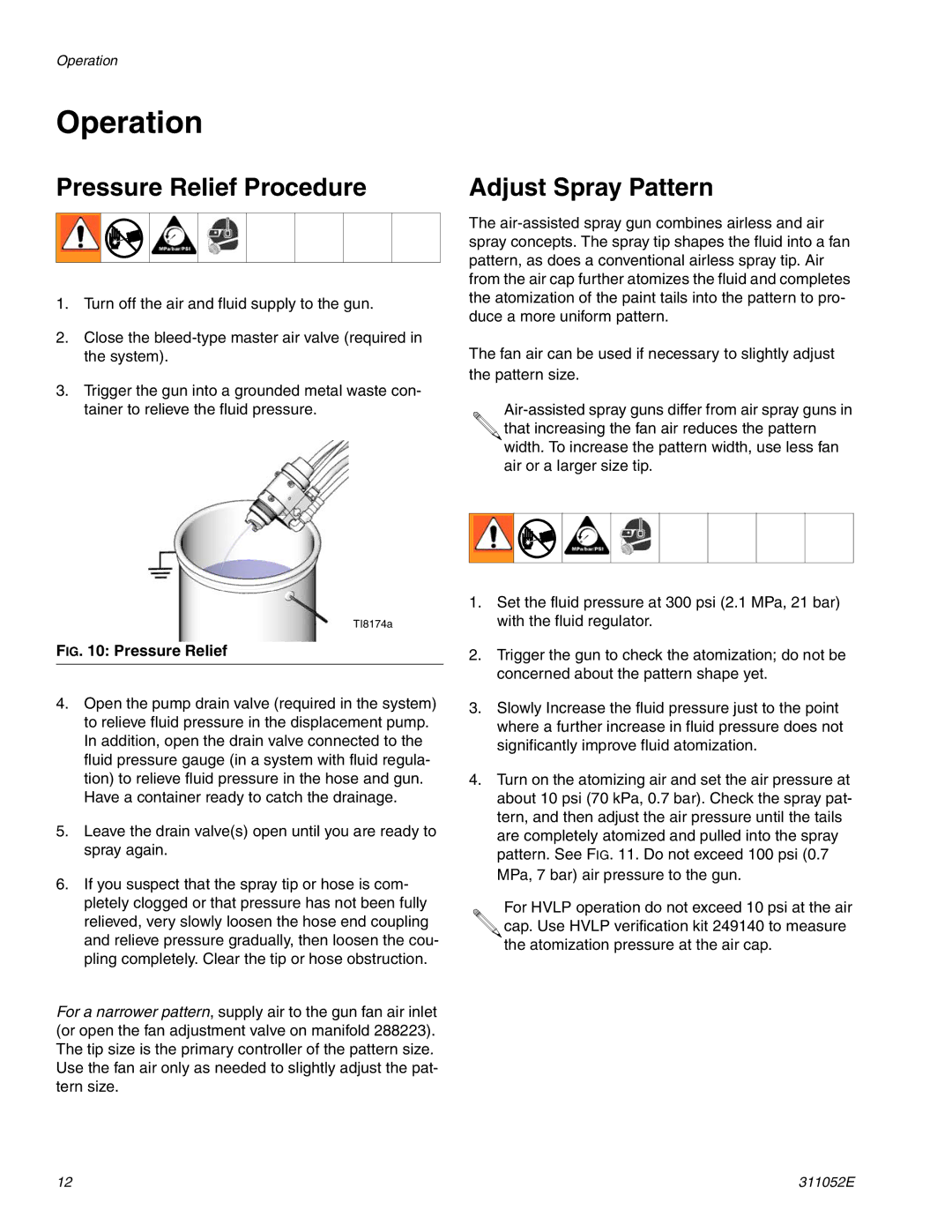
Operation
Operation
Pressure Relief Procedure
1.Turn off the air and fluid supply to the gun.
2.Close the
3.Trigger the gun into a grounded metal waste con- tainer to relieve the fluid pressure.
TI8174a
FIG. 10: Pressure Relief
4.Open the pump drain valve (required in the system) to relieve fluid pressure in the displacement pump. In addition, open the drain valve connected to the fluid pressure gauge (in a system with fluid regula- tion) to relieve fluid pressure in the hose and gun. Have a container ready to catch the drainage.
5.Leave the drain valve(s) open until you are ready to spray again.
6.If you suspect that the spray tip or hose is com- pletely clogged or that pressure has not been fully relieved, very slowly loosen the hose end coupling and relieve pressure gradually, then loosen the cou- pling completely. Clear the tip or hose obstruction.
For a narrower pattern, supply air to the gun fan air inlet (or open the fan adjustment valve on manifold 288223). The tip size is the primary controller of the pattern size. Use the fan air only as needed to slightly adjust the pat- tern size.
Adjust Spray Pattern
The
The fan air can be used if necessary to slightly adjust the pattern size.
1.Set the fluid pressure at 300 psi (2.1 MPa, 21 bar) with the fluid regulator.
2.Trigger the gun to check the atomization; do not be concerned about the pattern shape yet.
3.Slowly Increase the fluid pressure just to the point where a further increase in fluid pressure does not significantly improve fluid atomization.
4.Turn on the atomizing air and set the air pressure at about 10 psi (70 kPa, 0.7 bar). Check the spray pat- tern, and then adjust the air pressure until the tails are completely atomized and pulled into the spray pattern. See FIG. 11. Do not exceed 100 psi (0.7 MPa, 7 bar) air pressure to the gun.
For HVLP operation do not exceed 10 psi at the air cap. Use HVLP verification kit 249140 to measure the atomization pressure at the air cap.
12 | 311052E |
